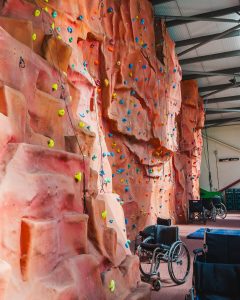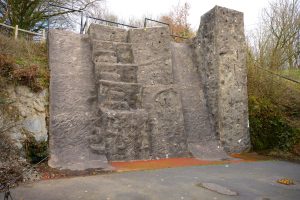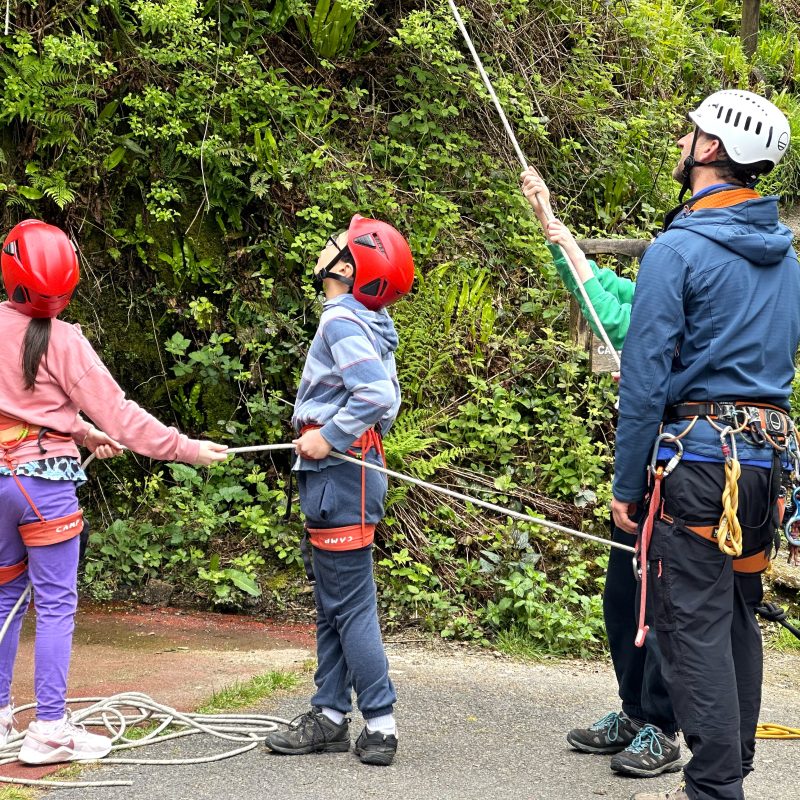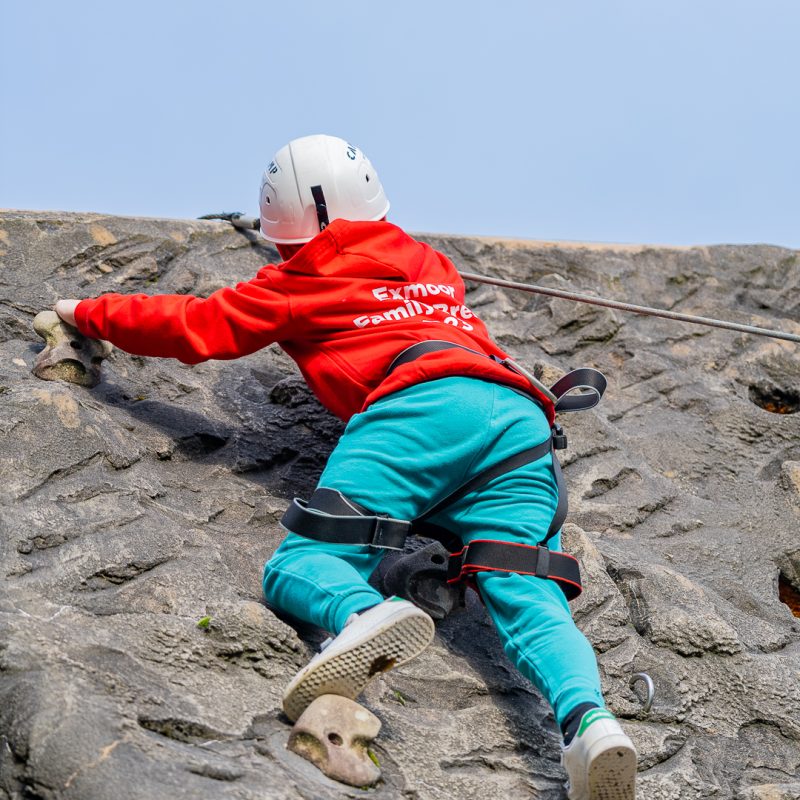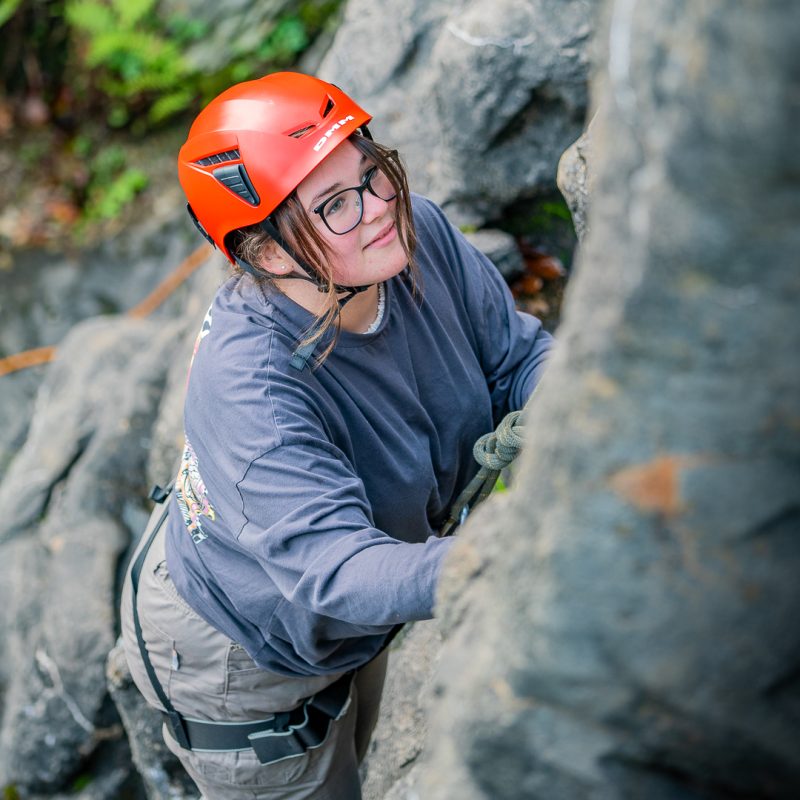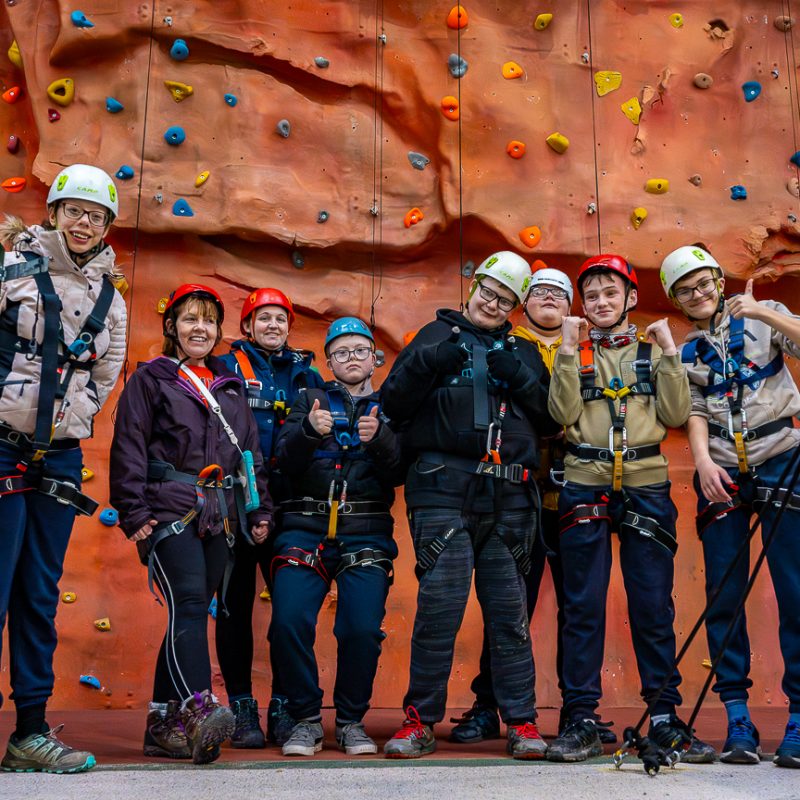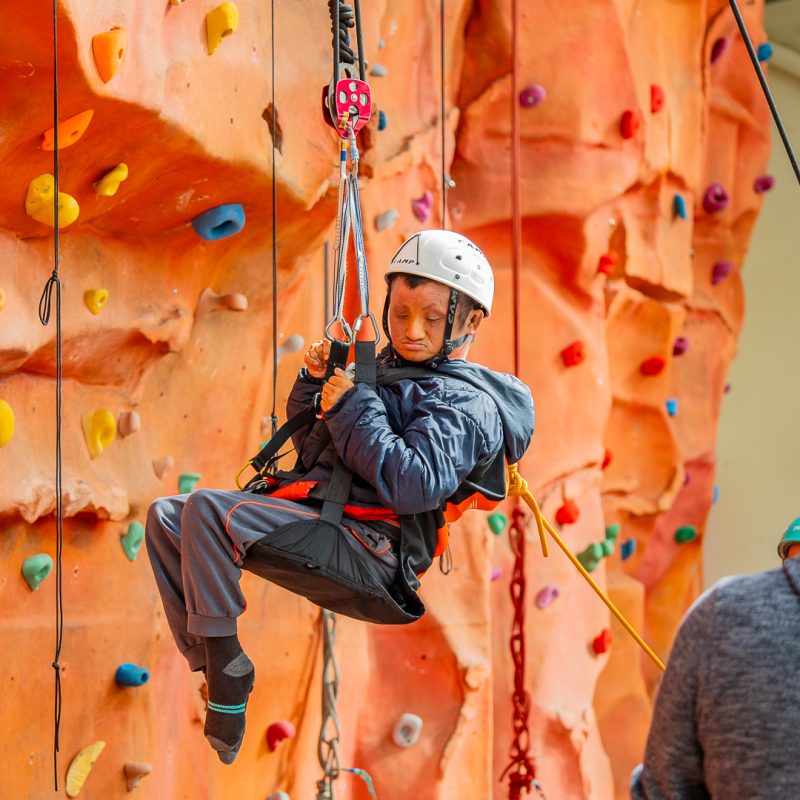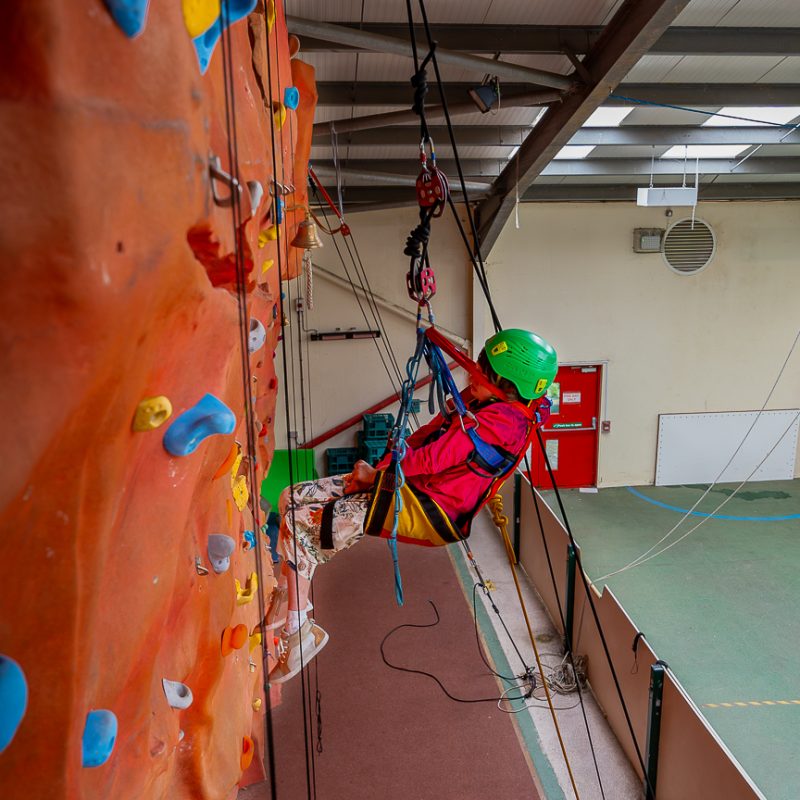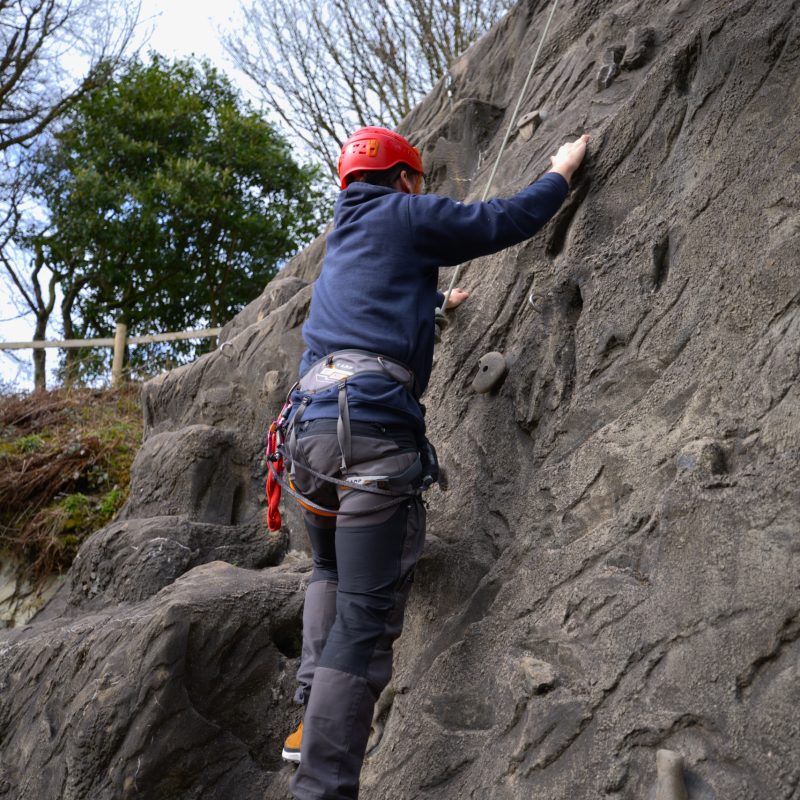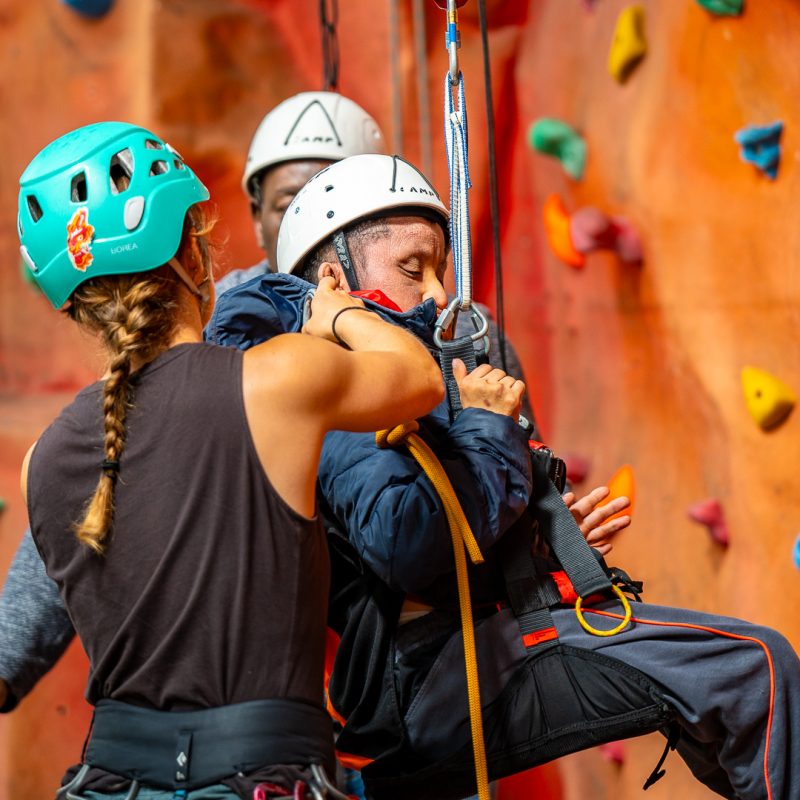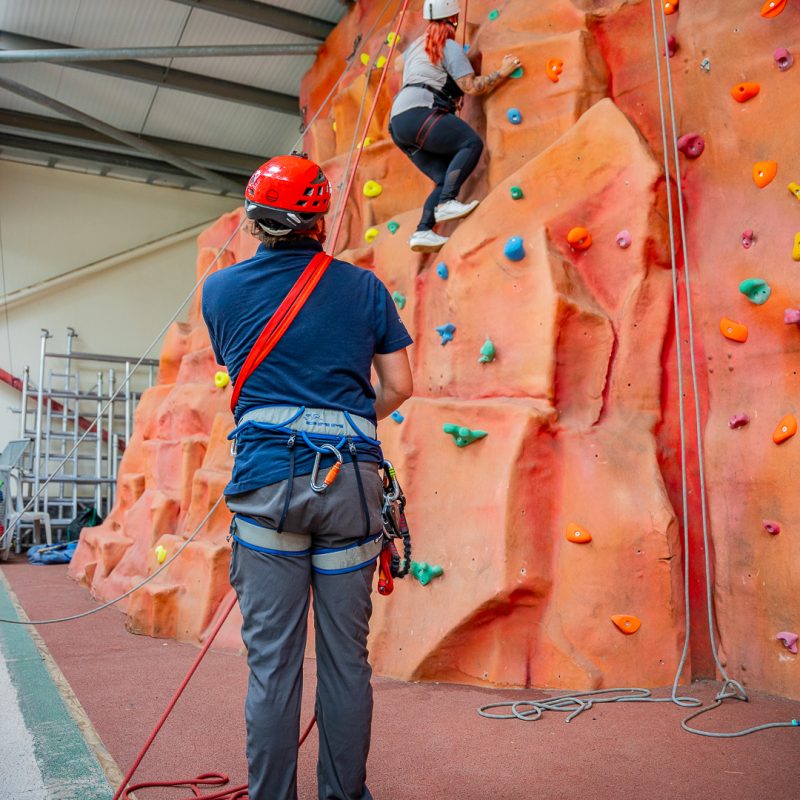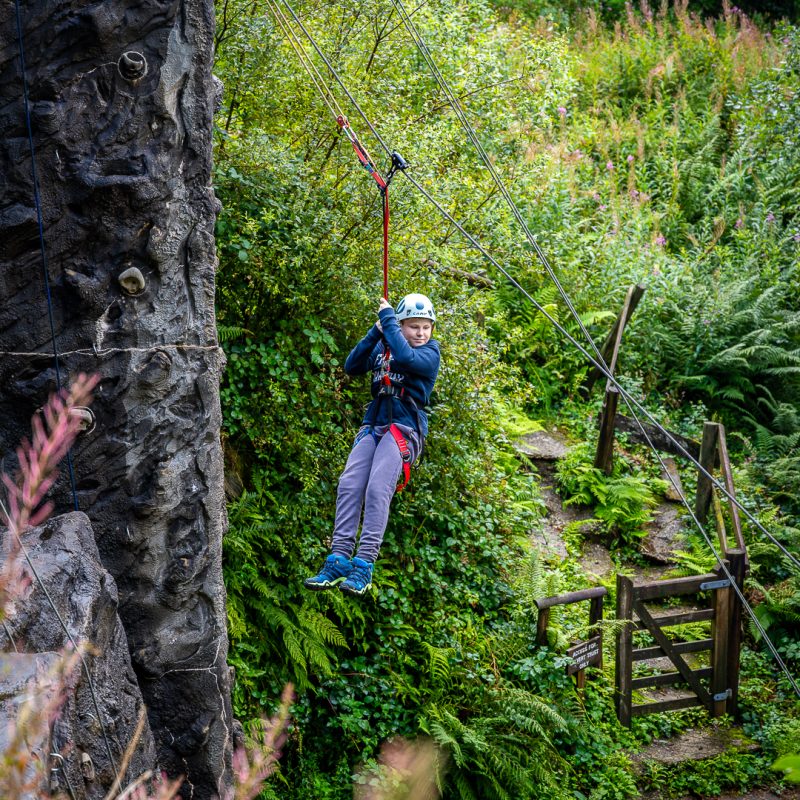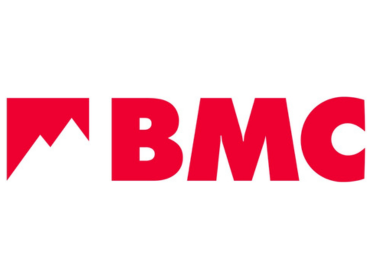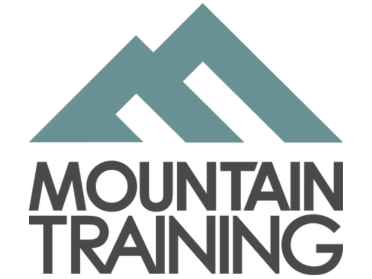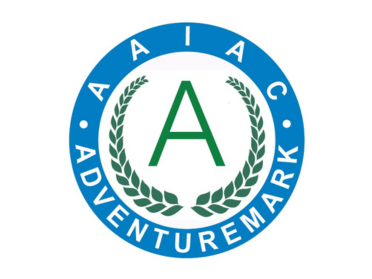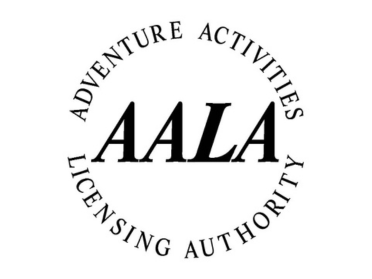Climbing in action
Your climbing session
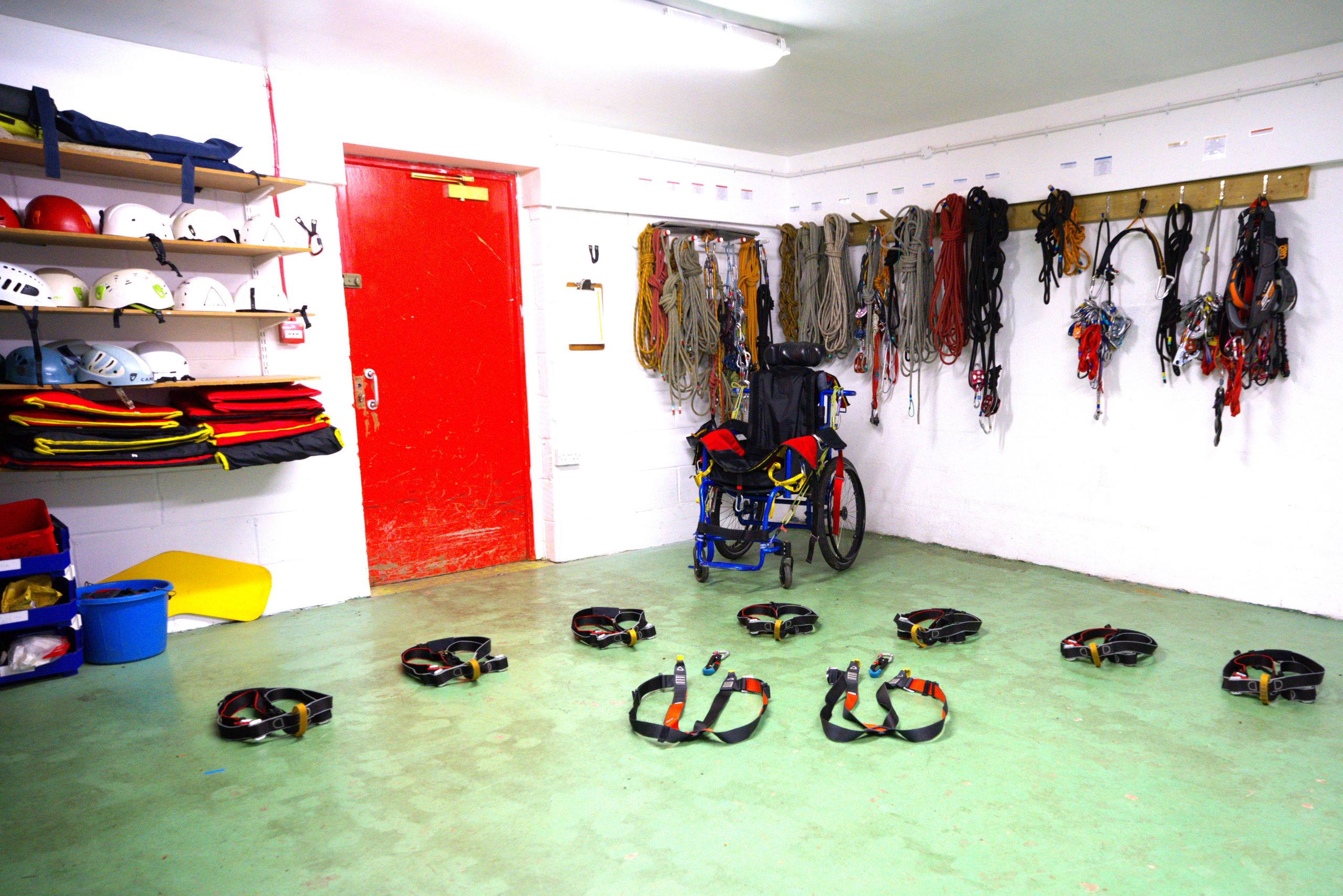
1: Get ready

1: Get ready
- You will meet your instructor at your allocated meeting point
- Your meeting point will be given to you on arrival at the centre in advance of your activity sessions
- Your instructor will take you to the equipment room to help you kit up with harnesses, helmets and any other specialised accessories needed for the session
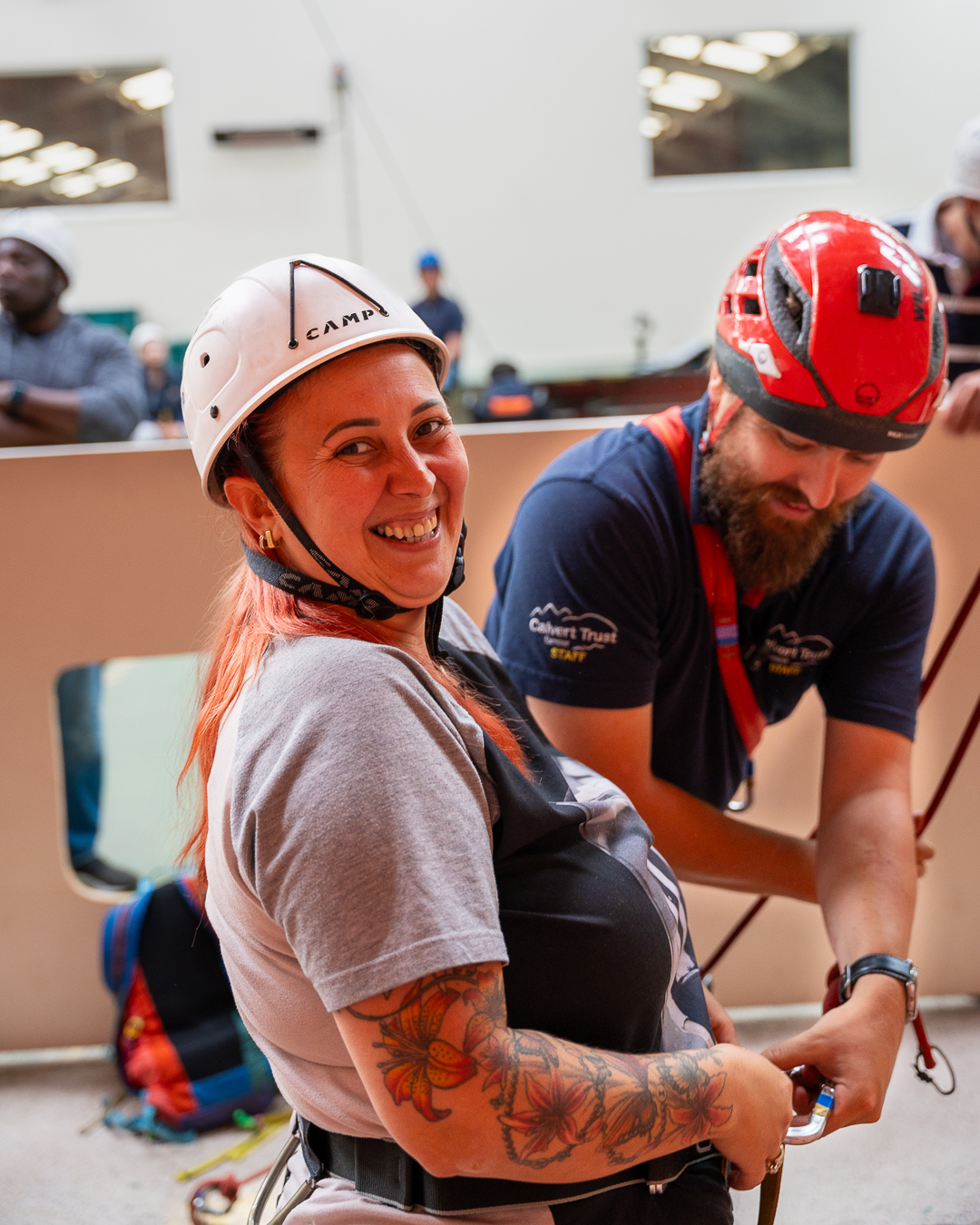
2: Learn how

2: Learn how
- Whether you’re using the indoor or outdoor climbing wall, your instructor will give you all a safety briefing before the activity starts. This will include teaching you how to use your equipment and what to expect from the session
- Your instructor will be able to teach you techniques and answer any questions you have, as well as setting you challenges that are achievable and fun
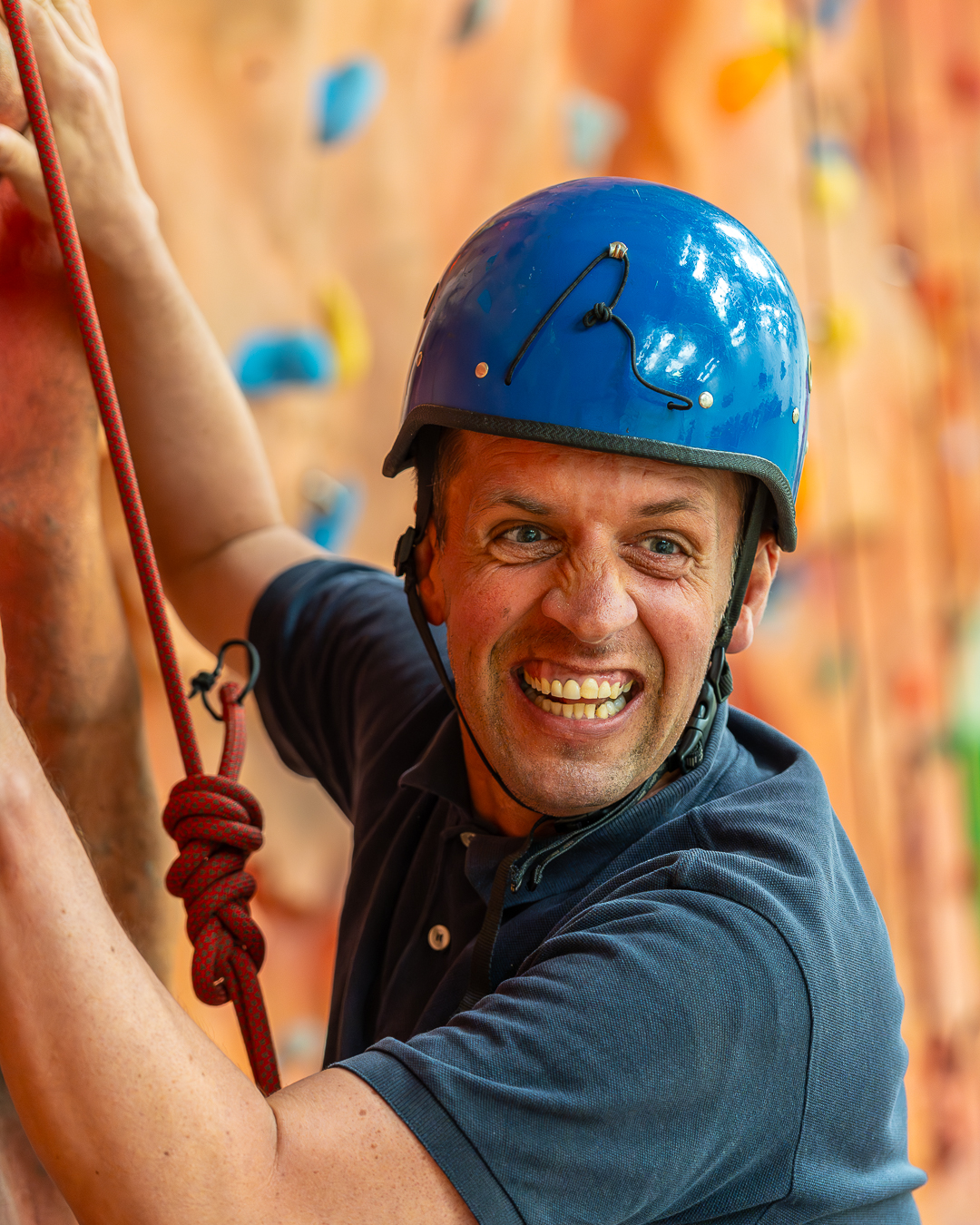
3: Have a go

3: Have a go
- After your brief, everyone has a go on our ‘cableway’, which is often described as a back-to-front zipwire, as it goes from the floor to the top of the climbing wall. This gives you an opportunity to get a feel for the heights
- Depending on group numbers and staff-to-guest ratios, you’ll climb one (or two) at a time, with the rest of your group and the instructor supporting you along the way
- When you’re not climbing, you might be given the opportunity to help belay the climber with the instructor
- Set yourself some challenges: whether that’s just giving it a good go or climbing a more challenging route
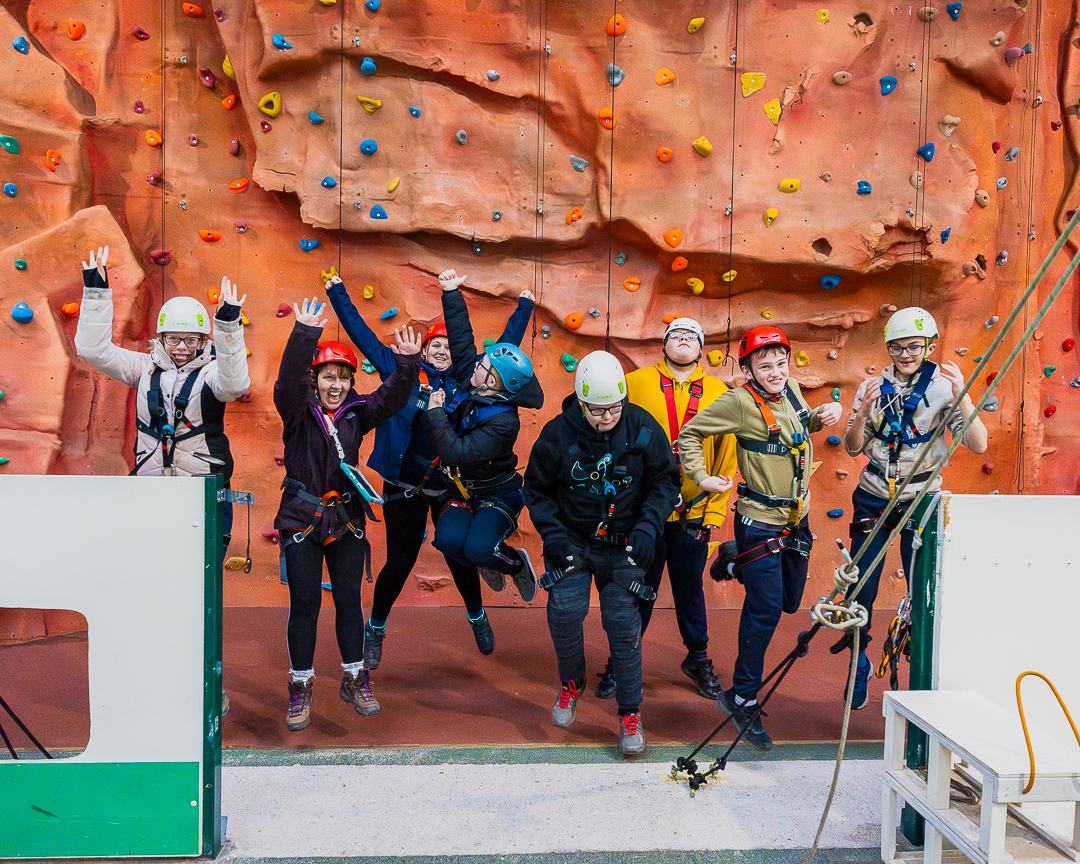
4: Finish up

4: Finish up
- At the end of your session, your instructor will remove any ropes attached to each of you and will take you to the equipment storage, where you’ll return your helmets and harnesses, before heading back to the centre.
Climbing equipment
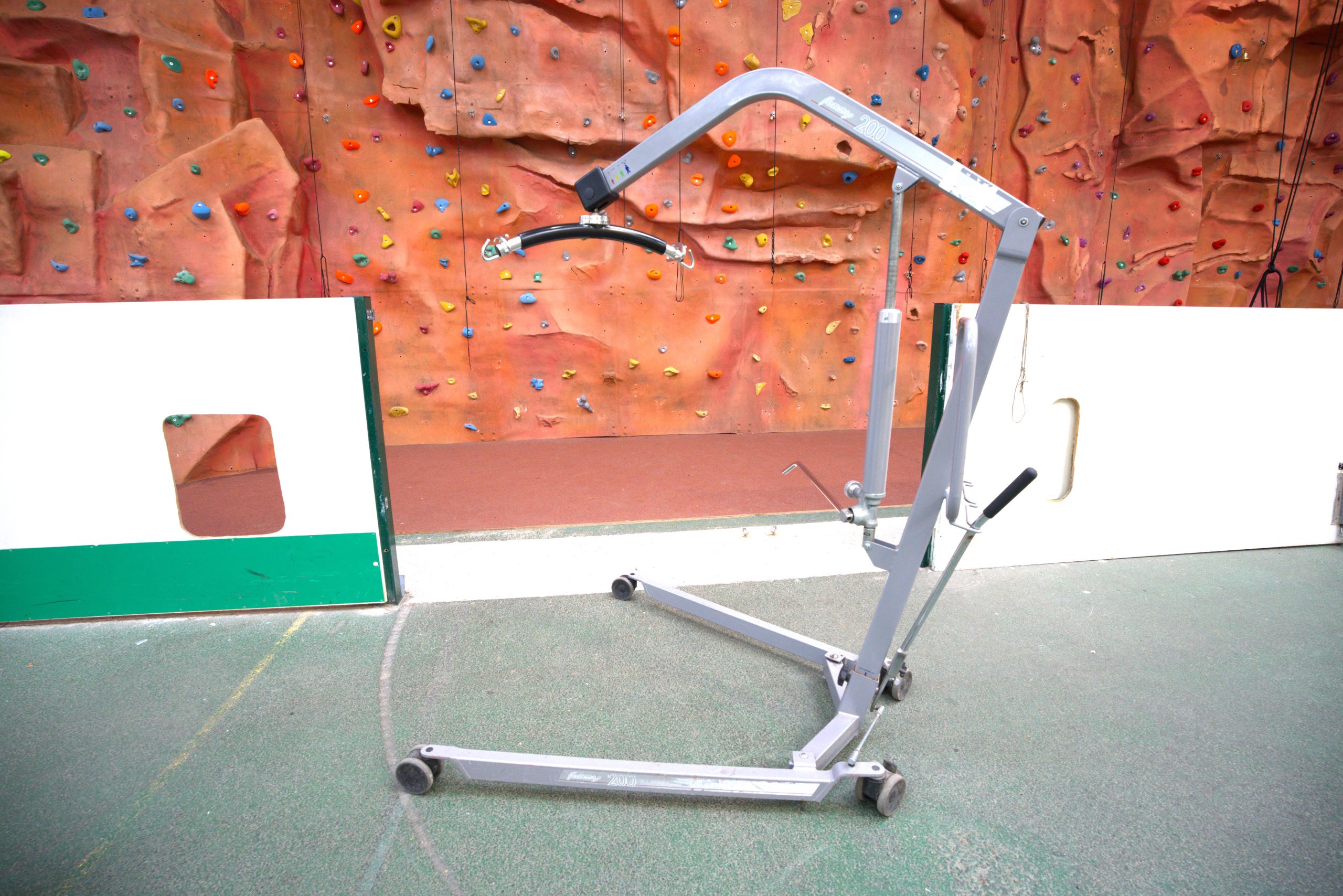
Mobile hoists

Mobile hoists
- These hoists can be used to transfer a wheelchair user from their own chair into the appropriate harnesses and safety systems
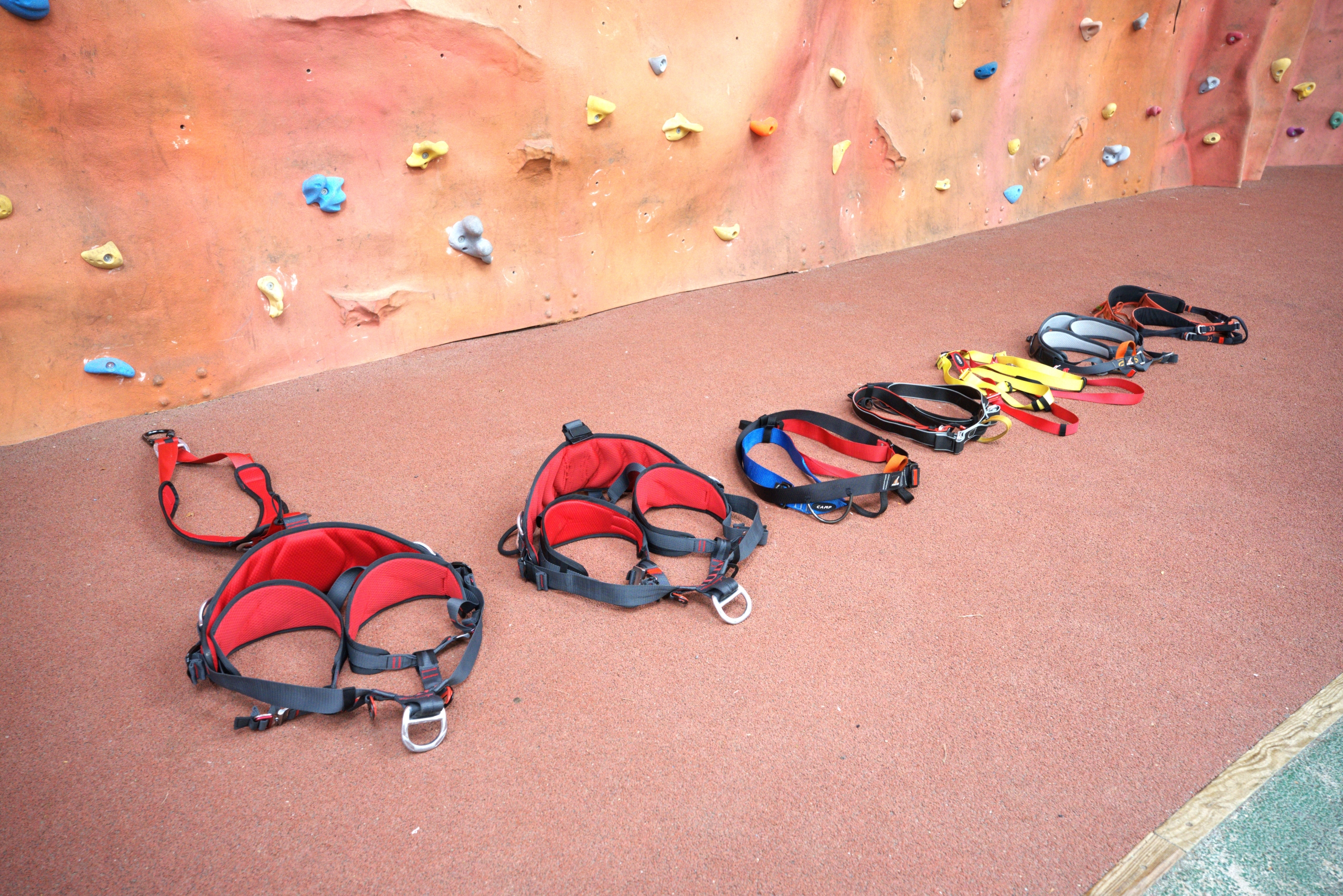
Harnesses

Harnesses
- Harnesses come in all shapes and sizes – these ones are called “sit” harnesses and are commonly used for rope-based activities like climbing
- This picture shows harnesses on the floor ready to put your feet into the smaller circles and then pull up and over your waist, like a pair of trousers
- Our instructors will help you to choose the right harness for you and show you how to put it on correctly
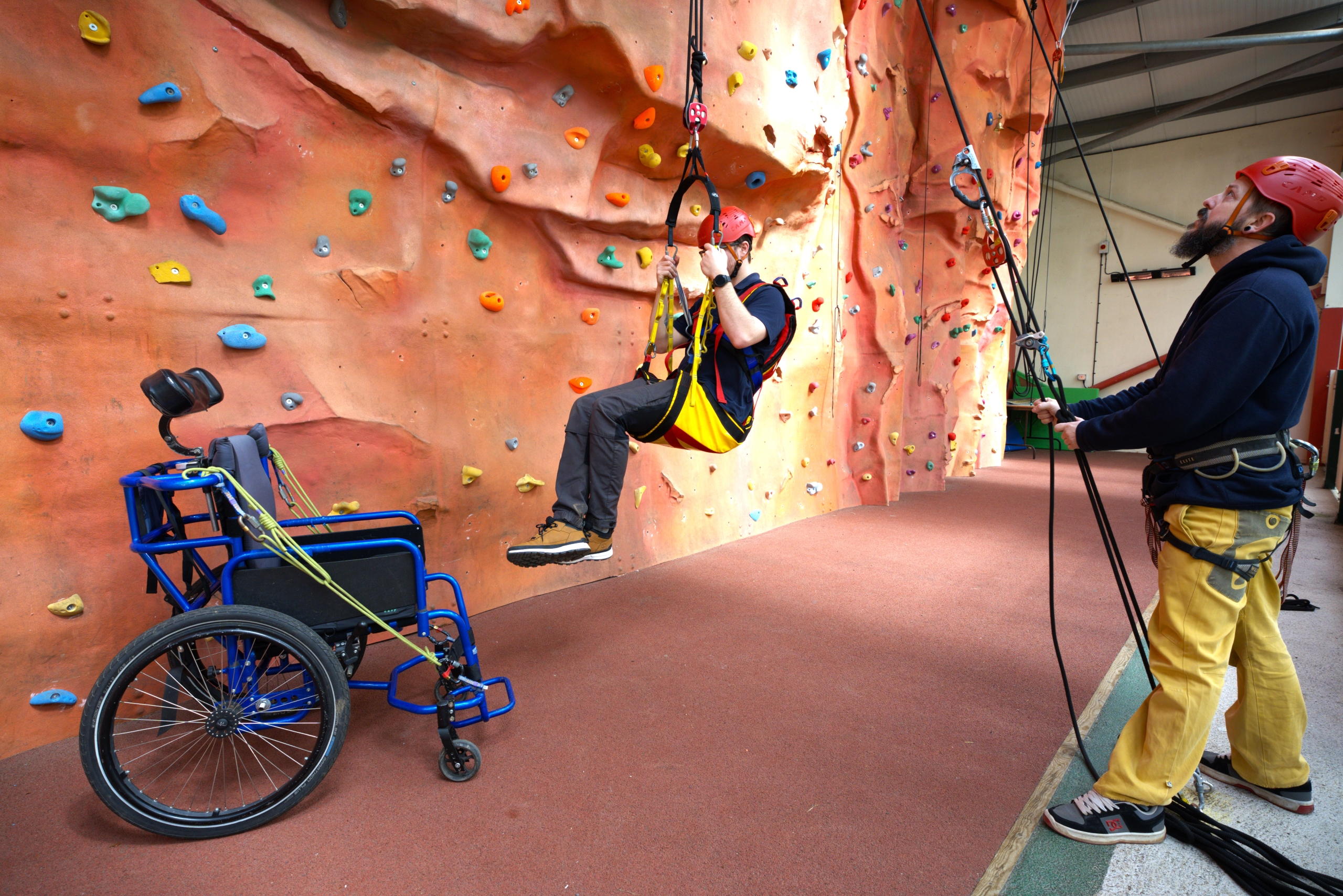
Kite Harness – Flexible

Kite Harness – Flexible
- This harness has velcro strips which allow instructors to attach some special padding that increases the rigidity of the harness
- Without the padding, the Kite harness adds a different level of support: the harness is easily moulded to the shape of the user
- Individuals who need extra spinal support benefit from this gear
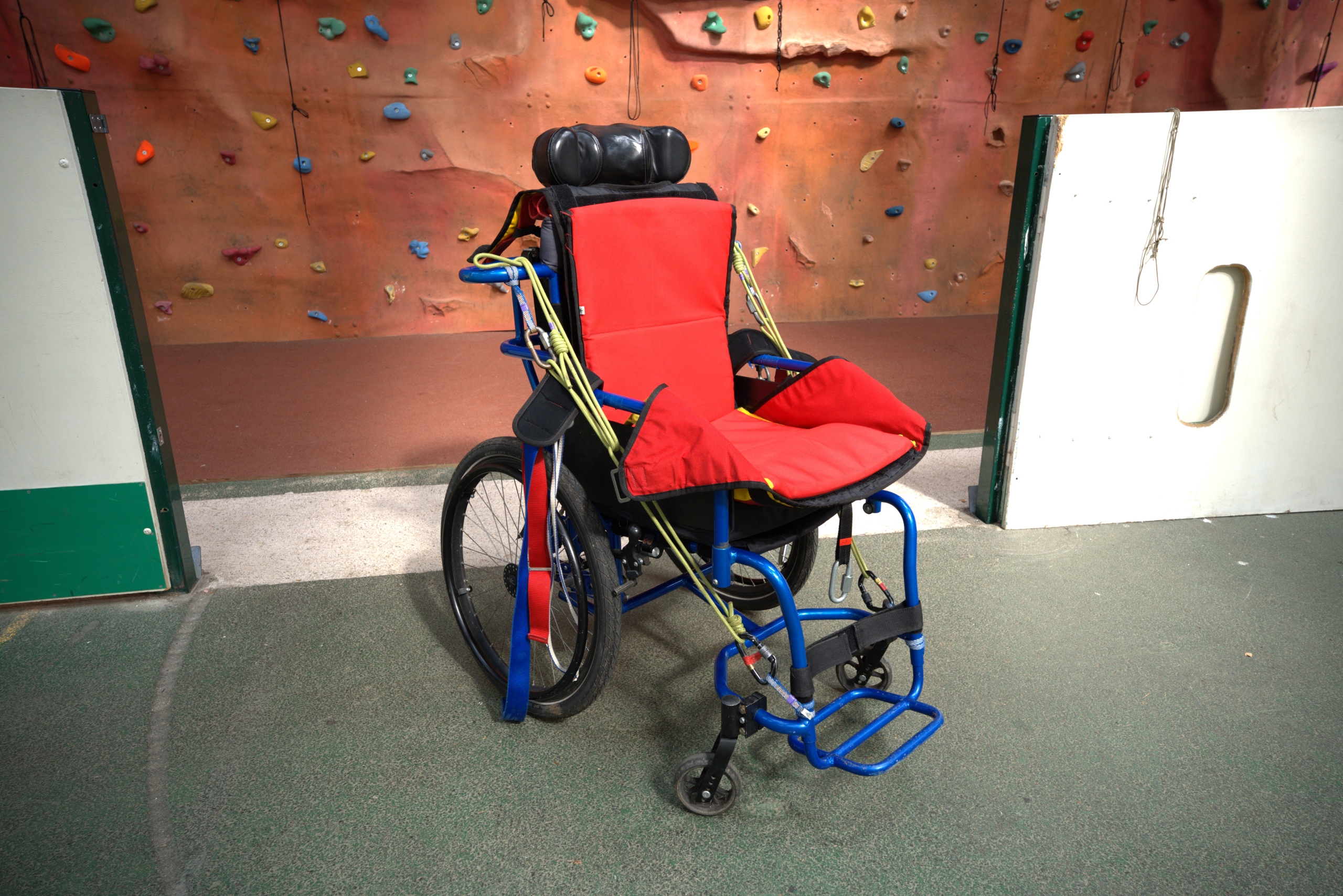
Kite Harness – Rigid

Kite Harness – Rigid
- This harness has velcro strips, which attach the red-coloured seating inside the chair: this increases the rigidity of the seating
- The red seating adds more structure to the seat, which can be a better option for some people than its flexible counterpart (Kit Harness – Flexible)
- Individuals who need extra spinal support benefit from this gear
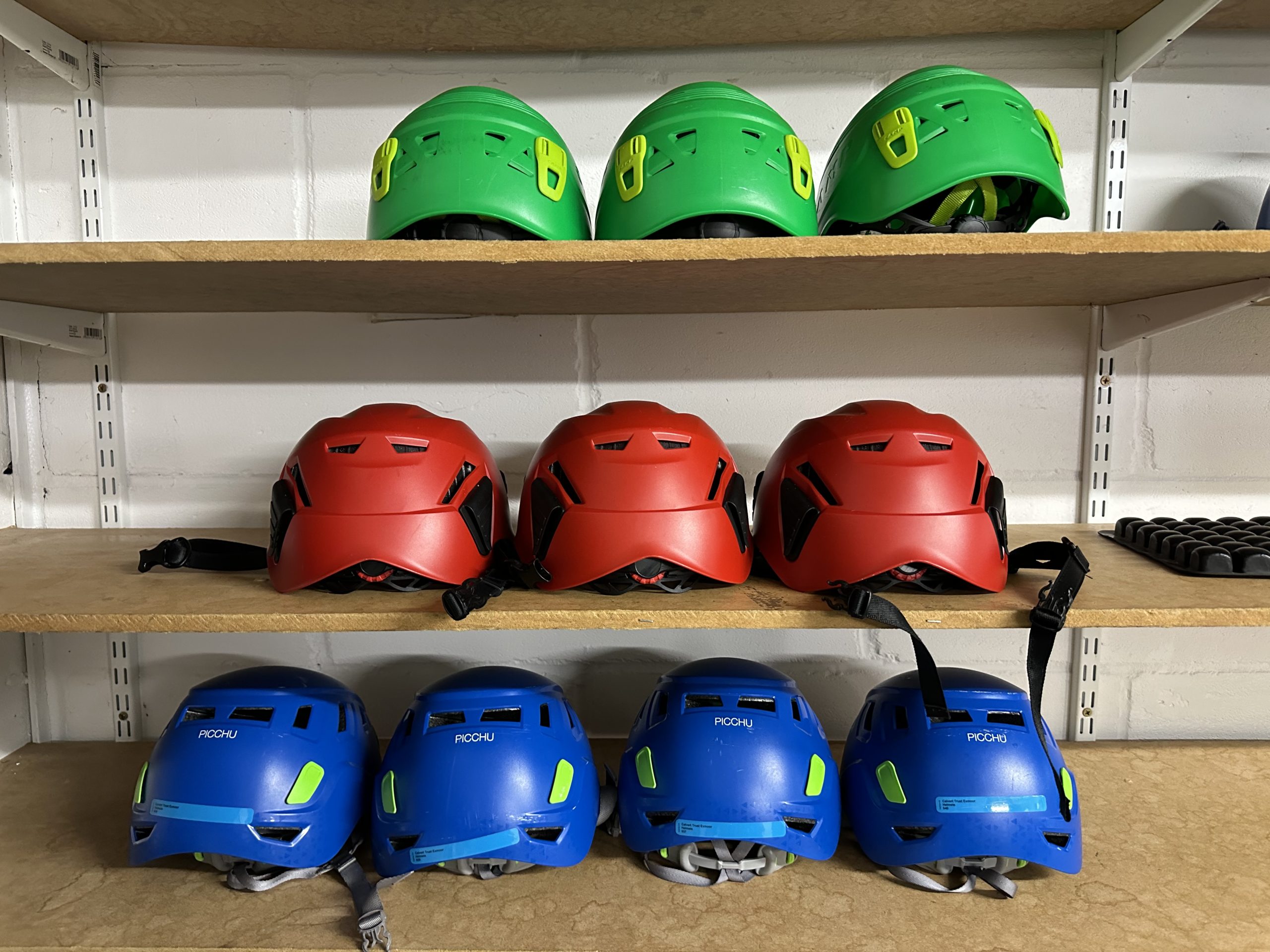
Helmets

Helmets
- In all of our rope-based activities, you must wear a helmet!
- We have helmets of all sizes
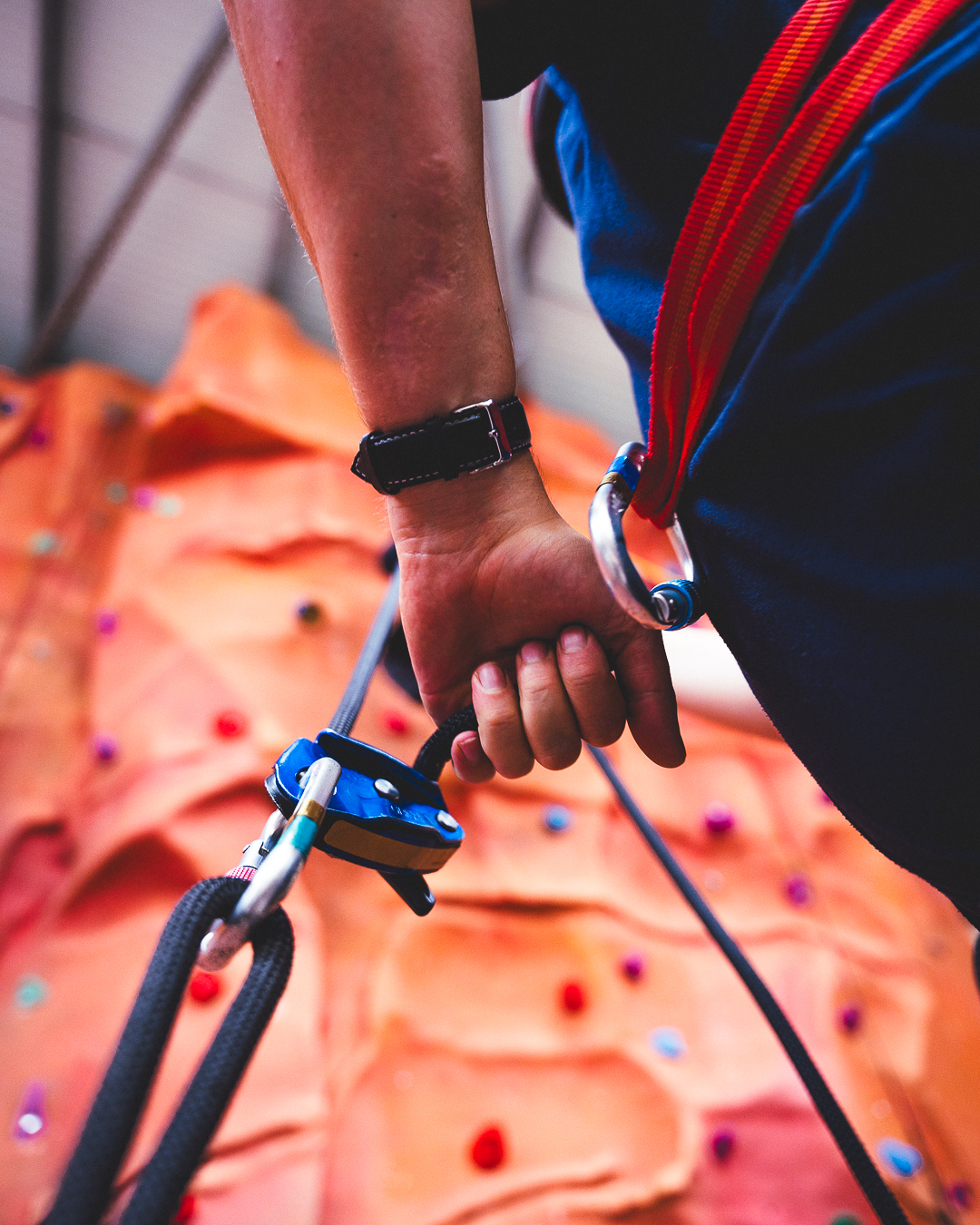
Rope Equipment

Rope Equipment
- Don’t worry, it’ll be the instructor’s responsibility to use this equipment and, should you need to use it yourself, they’ll teach you exactly how to use it safely
- This equipment could include ropes and various metalwork
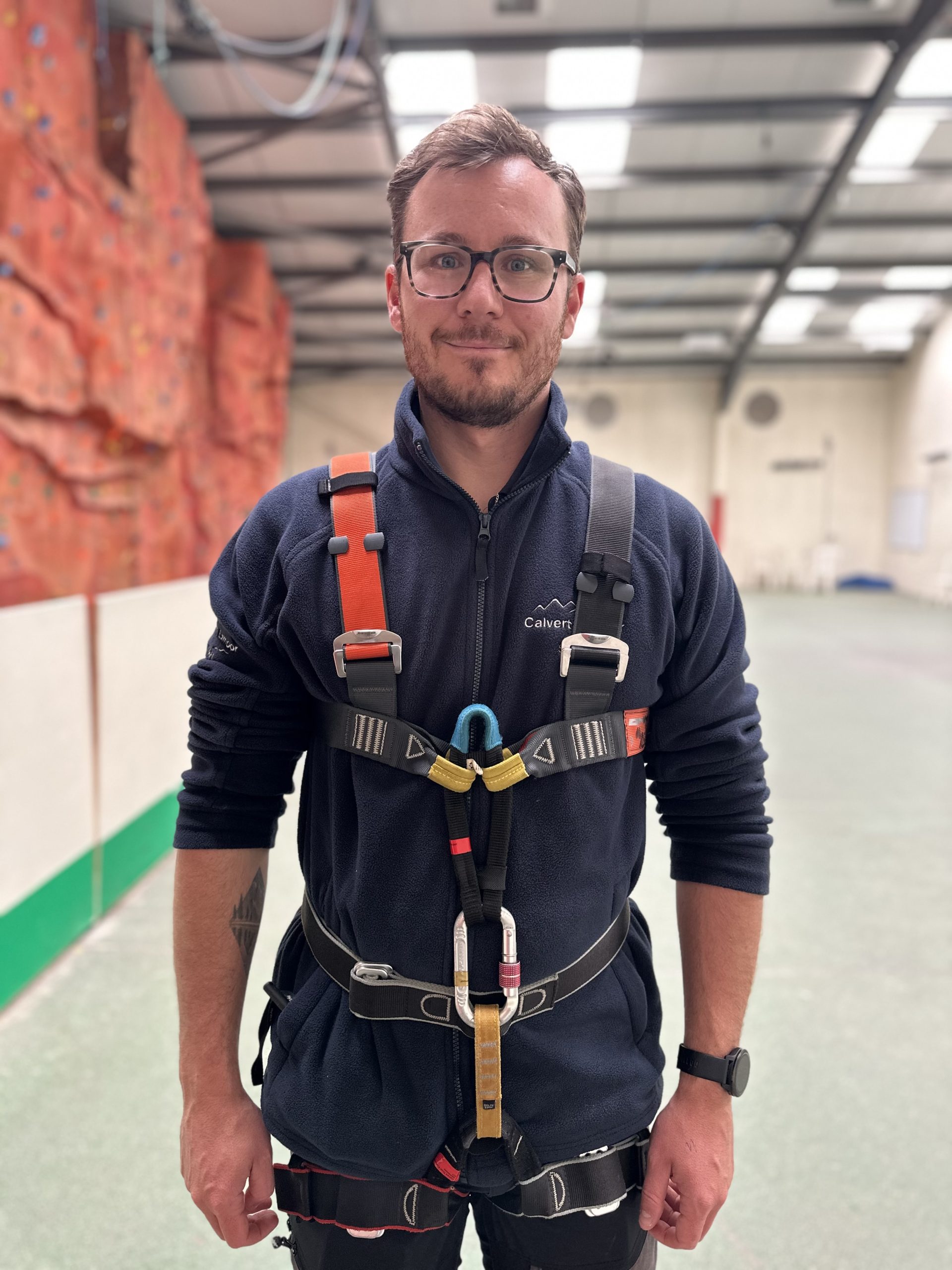
Chest Harness

Chest Harness
- Much like a “sit” harness is pulled on like a pair of trousers, the chest harness is put on like a jacket
- This harness engages around the top half of the body and attaches onto the “sit” harness, which creates a full-body support system
- This is typically used for those who are
- larger-bodied
- smaller-bodied
- lack core strength
- would simply like to feel more supported
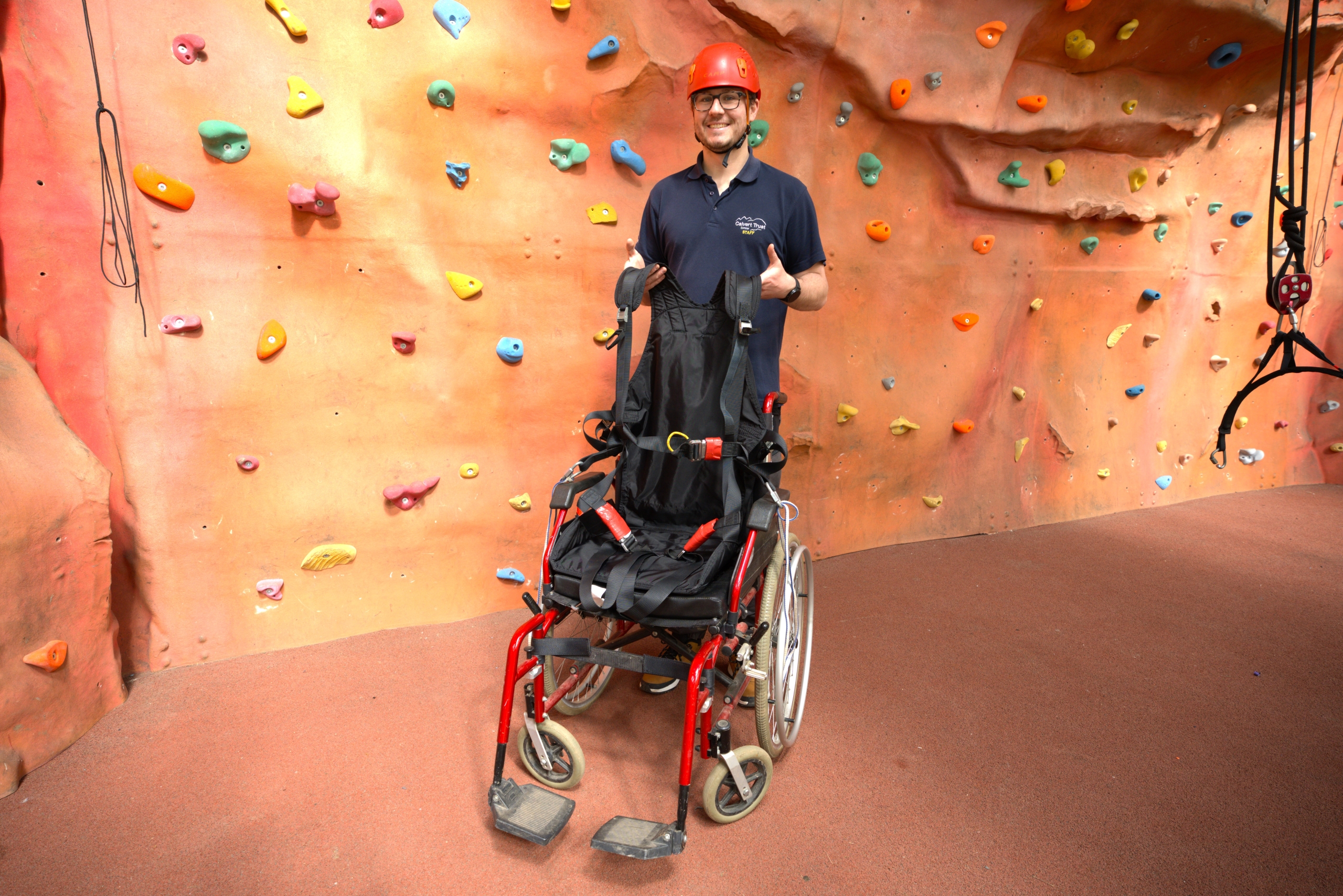
Pont Harness

Pont Harness
- The Pont harness is similar to the Kite harness, in that the seat section is rigid, but the back support is not
- This harness benefits users who may need extra support but still have the core stability to sit upright by themselves
FAQs
Yes! We leave no one out and no matter what, we do everything we can to make sure you can enjoy the experience of climbing in a way that suits you and keeps you safe.
At Calvert Exmoor, it’s what you CAN do that counts. Our instructors use the term ‘challenge by choice’, which ensures that while you’re taking part and given challenges along the way, you ultimately always have the agency and control over your own limitations. Our staff are there to keep you safe but also build your confidence, even if this means accomplishing a simpler version of the activity.
Every instructor has:
- extensive in-house training including observation hours logged prior to running a session independently
- Either
- a Climbing Wall Instructor (CWI) qualification including an abseil module by British Mountaineering Council
- OR
- a Rock Climbing Instructor (RCI) qualification by British Mountaineering Council
Our climbing activities can take place either in our sports hall or outside at our outdoor climbing and abseil wall. Both of these are onsite (2 minute walk away from the main centre) and next door to each other.
